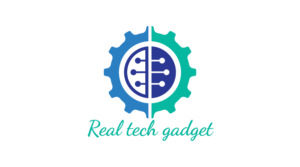Imagine standing in a vast library where millions of books are written in different styles and languages. You’re tasked with finding passages that mean the same thing, even if the words used are entirely different. Flipping through each page manually would take years. What you need is a trusted guide who understands not only the words but also their intended meaning.
Sentence Transformers play this role in modern natural language processing. They don’t just match strings of text—they capture the essence of meaning, enabling machines to recognise when two sentences are semantically alike, even if phrased differently.
From Words to Meaning
Traditional methods of text comparison often relied on counting words, much like tallying the number of ingredients in two recipes. While useful at a surface level, such comparisons fail to see the bigger picture: the flavour of the dish. Two recipes may use different ingredients but still produce the same taste.
Sentence Transformers overcome this limitation by embedding sentences into dense vector spaces where meaning, not just word frequency, drives similarity. Here, context becomes king. A sentence like “The cat is on the mat” and “A mat has a cat resting on it” end up close together in this semantic landscape.
For learners, concepts like embeddings and vector spaces often become clearer during a data scientist course, where theory is paired with practical experiments that help demystify the transformation of text into meaningful representations.
How Sentence Transformers Work
At the core of Sentence Transformers lies a combination of pre-trained language models and fine-tuning strategies. They begin with models like BERT or RoBERTa, which already understand grammar and context. These models are then fine-tuned with tasks such as natural language inference or paraphrase detection, teaching them to recognise when two pieces of text mean the same thing.
It’s similar to a musician trained in classical scales who later learns jazz improvisation—the foundation is there, but new practice allows for greater adaptability.
This adaptability is what makes Sentence Transformers widely applicable, from semantic search engines to recommendation systems. The ability to map meaning rather than mere keywords has transformed the way we design intelligent systems.
Practical Applications in the Real World
Sentence Transformers are more than academic curiosities—they’re tools shaping everyday technology. Consider customer support systems that can group similar complaints, regardless of phrasing, or e-commerce platforms that recommend products by understanding intent rather than exact keywords.
Even in legal or healthcare domains, they assist in matching documents with similar clauses or patient notes that share medical significance. This leap from literal words to conceptual similarity is what enables smarter, context-aware systems.
Professional pathways, such as a data science course in Mumbai, often expose learners to real-world use cases. By working with semantic similarity datasets, students discover how algorithms move from abstract concepts to solving concrete industry challenges.
Challenges and Future Directions
Despite their strengths, Sentence Transformers aren’t flawless. They sometimes misinterpret subtle sarcasm, cultural references, or shifts in context. Moreover, training large models demands significant computational resources, making accessibility a hurdle for smaller organisations.
The future promises solutions—lighter models, improved multilingual capabilities, and domain-specific fine-tuning that will allow semantic similarity systems to become more accurate and more widely usable. As the field grows, these innovations will bring the “library guide” metaphor closer to reality, ensuring machines understand meaning as profoundly as humans do.
Institutions offering data science course in Mumbai often keep pace with these advancements, ensuring learners are trained not just in today’s tools but also in anticipating tomorrow’s breakthroughs.
Conclusion
Sentence Transformers represent a leap forward in how machines understand language. By moving beyond simple word counts and diving into the realm of meaning, they allow systems to identify similarity with human-like intuition.
For aspiring professionals, structured learning, such as a data scientist course, provides a foundation to explore these innovations, offering both theoretical knowledge and hands-on exposure. With such knowledge, learners position themselves at the frontier of language technology—where understanding isn’t about words alone, but about the stories they tell.
Business Name: ExcelR- Data Science, Data Analytics, Business Analyst Course Training Mumbai
Address: Unit no. 302, 03rd Floor, Ashok Premises, Old Nagardas Rd, Nicolas Wadi Rd, Mogra Village, Gundavali Gaothan, Andheri E, Mumbai, Maharashtra 400069, Phone: 09108238354, Email: enquiry@excelr.com.

